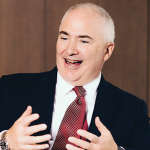There are lots of factors that are supposed to have a major role in the success of a law firm that on closer examination are hard to sustain. Issues in this camp include remuneration models, culture, strategy and a specific practice mix. What this list has in common is that there is no right answer – all that matters is what you are doing is appropriate to what you are trying to achieve and the markets that you are working in (and even then it’s less central than supposed).
You can be lockstep, eat-what-you kill, collegial or aggressive – it works for some and flops for others. Just look at the extent that the Magic Circle has elevated one particular model of lockstep into some half-baked sacred tenant, with disastrous consequences.
Strategy? Law firms largely don’t have them. Strategy is often an after-the-fact rationalised description of the status quo. Strategy tends to become an issue when it is either breathtakingly unrealistic or, more commonly, the firm just isn’t delivering in more concrete aspects.
Here are a few things that matter more than is commonly discussed: optimism, a sense of purpose, morale, organic growth (without margin erosion) and confidence. Obviously, the factors in this list tend to be related. Firms that are sustaining decent growth, generally have higher morale and confidence.
Of that list, confidence is perhaps the most neglected point. Law firms with assertive partners, and forthright leadership setting that tone from the top, give off a very different tone that clients and potential clients notice. It’s Sales Training 101 that you need confidence to sell – that applies to professional services too, even if the sale is a subtle art.
Which brings us to Pinsent Masons. The firm is an interesting case study in recent years. While people knew where they stood with the 1990s incarnation of the classy national player Pinsent Curtis, the profession hasn’t known quite what to make of it since its 2004 union with construction and IT specialist Masons. Ironically, the deal was well integrated but the same pattern was repeated in 2012 with the McGrigors takeover – another well-executed, poorly-received union.
The firm has been a more than respectable performer in recent years – outpacing some peers like Addleshaw Goddard and Wragge & Co, while keeping pace with larger rivals like Eversheds or DLA Piper. Yet it lacked the broad brand visibility and clear ambition of those larger rivals. It has also been one of the few law firms to look like it means its sector focus – even if at times it seems odd that Pinsents wasn’t projecting engine room practices like corporate and disputes more pro-actively.
You could make a good case that part of the problem was that Pinsents was falling short on too many factors on that second list. Its old leadership team delivered operational competence, but Pinsents felt too inward-looking and lacked its old ambition.
If that deficiency has been a factor in holding back Pinsents, the good news is that new leadership under senior partner Richard Foley (pictured) is promising – and seems able to deliver – a little more flair and bite to Brand Pinsents. Looking at the current mood among general counsel and the state of Pinsents’ peers – there is a real opportunity there. But Pinsents will have to get out there and take it. Confidently.
alex.novarese@legalease.co.uk
For more analysis of Pinsents’ new leadership see: More outward-facing but does new leadership have a message for Pinsents?











